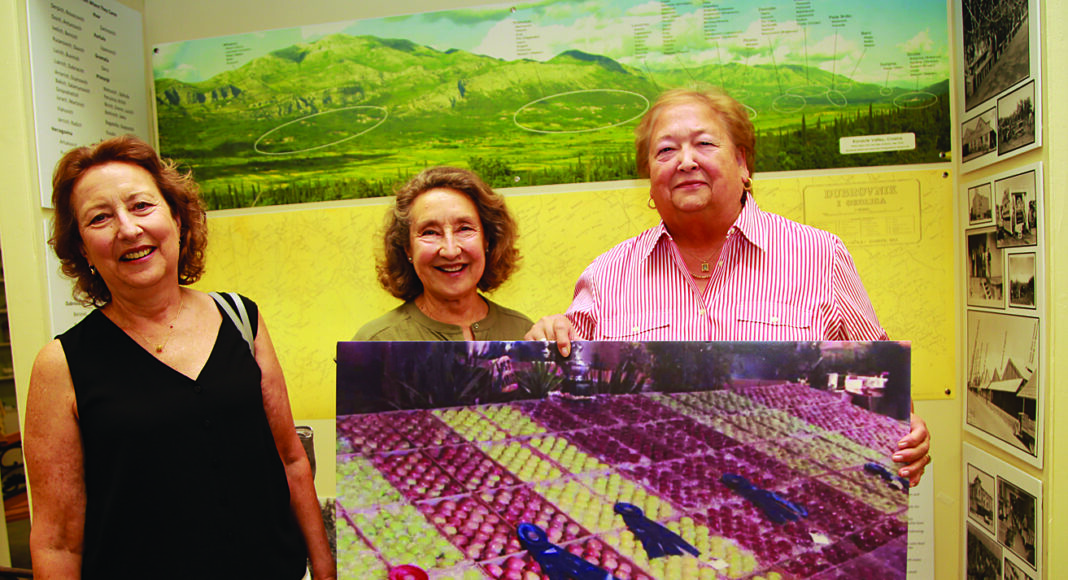Final touches are still being completed at the Fairgrounds as the 136th Santa Cruz County Fair approaches. From temporary livestock pens, art exhibits, collections, colorful flowers and fresh paint, the fairgrounds is abuzz with activity.
In the Codiga Center and Museum, Agricultural History Project CEO John Kegebein said volunteers have been working to brighten up the center with new displays and other additions, including a number of historic apple labels from prominent local families now hanging from the ceiling.
A new exhibit located near the center of the museum celebrates the contributions Croatian immigrants had to grow the robust agricultural industry in the Pajaro Valley.
Titled Slavic Community in the Pajaro Valley, the exhibit prominently displays a map of the Dubrovnik region of Croatia, historical photos of Croatian workers, and a list of family names from this region that reside in the Pajaro Valley.
Linda Pavlovich, president of the Slavic American Cultural Organization, worked with Donna Mekis and Kathryn Mekis Miller, co-authors of Blossoms Into Gold: The Croatians in the Pajaro Valley, on the exhibit.
Donna Mekis said the purpose of the fair is to display the rich agricultural history of the Pajaro Valley, and the new exhibit ties directly into that.
“The Croatians have played a huge part of that for close to 100 years,” she says.
According to history compiled by the exhibitors, by the 1920s, more than 20% of Watsonville’s population came from rural villages off the eastern Adriatic coast, which is now the southern portion of Croatia. The City of Watsonville solidified those historic ties in 2019 when it formed a sister city connection with Cavtat.
Many Croatians had immigrated to San Francisco at the height of the gold rush in the early 19th century, and used their backgrounds as traders to provide goods to the miners. A large population of these immigrants eventually landed in the Pajaro Valley, where they used their expertise to bring a fresh perspective to the local agricultural industry, Mekis Miller says.
Many of their innovations rooted in the Pajaro Valley eventually expanded nationwide, such as the onset of a vertical production chain that got fruit from tree to transportation within a day. They also encouraged Pajaro Valley growers to expand their orchards by offering “Blossom Contracts,” where they set a specific price and bought all future fruit from an orchard, according to the compiled history.
Watsonville’s Croatians were largely responsible for growing and shipping 2.5 million boxes of apples annually throughout the nation and world by 1903.
The exhibit’s organizers say they hope viewers come away with an understanding of the important role immigrants have played in forming the Pajaro Valley.
“I have always been intrigued by the diversity of workers in the Pajaro Valley,” Donna Mekis says. “It’s important for all of us to understand all the different histories and cultures of people who come from so many places.”
Pavlovich added that she hopes other immigrant groups will be inspired to research and present their own histories, as there are many other stories waiting to be told.
The Santa Cruz County Fair runs Wednesday, Sept. 14 through Sunday, Sept. 18 at the Santa Cruz County Fairgrounds, 2601 E. Lake Ave., Watsonville. More information and tickets at santacruzcountyfair.com.














